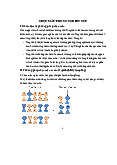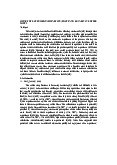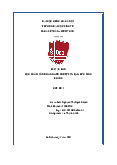



















Preview text:
Every drop counts
1) It takes................. litres of water to grow enough coltee beans to make one cup of coffee.
1) Cần phải có............ lít nước để trồng đủ hạt cà phê để pha một tách cà phê.
2) Washing the car uses about …………..litres of water.
2) Rửa xe sử dụng khoảng …………..lít nước.
3) A leaky tap accounts for………………………… litres of water loss per day.
3) Một vòi nước bị rò rỉ gây ra …………… lít nước thất thoát mỗi ngày.
4) It takes …………………...litres of water to produce a laptop.
4) Cần …………….lít nước để sản xuất ra một chiếc máy tính xách tay.
5) It takes……………………………litres of water to fill a swimming pool.
5) Cần…………………lít nước để lấp đầy một bể bơi.
6) ……………………………….litres of water are used to recycle a newspaper.
6) ………………………….lít nước được sử dụng để tái chế một tờ báo. Starting off Bắt đầu
1) Work in small groups. Each of the things in the photos uses an
amount of water. Complete the sentences (1-6) by choosing a number from the box (a-f).
1) Làm việc theo nhóm nhỏ. Mỗi thứ trong ảnh đều sử dụng một lượng
nước. Hoàn thành các câu (1-6) bằng cách chọn một số từ hộp (a-f).
Approximate number of litres Số lít ước tính A. 15 B.45 C.250 D.675 E.300 F.99.000
2) Check your answers to Exercise 1 on page 175. Which figures
surprised you, and which figures did you expect?
2) Kiểm tra câu trả lời của bạn cho Bài tập 1 ở trang 175. Bạn ngạc
nhiên về những con số nào và bạn mong đợi những con số nào?
3) Do people use a lot of water where you live? Why? / Why not?
3) Người dân ở nơi bạn sống có sử dụng nhiều nước không? Tại sao? / Tại sao không? Listening
Matching, Flow-chart completion
So khớp, hoàn thành sơ đồ
1) Work in pairs. You are going to hear a student talking to a tutor about
a talk he is preparing on 'desalination' - the process of making fresh water from seawater.
1) Làm việc theo cặp. Bạn sẽ nghe một học sinh nói chuyện với gia sư về
bài nói mà anh ấy đang chuẩn bị về 'khử muối' - quá trình tạo ra nước ngọt từ nước biển.
Why do you think desalination is important?
• Tại sao bạn nghĩ việc khử muối là quan trọng?
Have you ever given a talk to a group of people? What was it about?
• Bạn đã bao giờ thuyết trình trước một nhóm người chưa? Cái đó nói về gì thế? How did you prepare for it?
• Bạn đã chuẩn bị cho việc đó như thế nào?
How did you feel about it before and afterwards?
• Bạn cảm thấy thế nào trước và sau đó?
2) Read the task below. Underline the key ideas in the opening question
and the box of options (A-C).
2) Đọc bài tập dưới đây. Gạch dưới những ý chính trong câu hỏi mở đầu và
hộp các lựa chọn (A-C). Questions 1-5 Câu hỏi 1-5
What comment does the tutor make about each part of the presentation?
Gia sư nhận xét gì về mỗi phần của bài thuyết trình?
Write the correct letter, A-C, next to Questions 1-5.
Viết chữ cái đúng, A-C, bên cạnh câu hỏi 1-5.
NB You may use any letter more than once.
NB Bạn có thể sử dụng bất kỳ chữ cái nào nhiều lần. Parts of Presentation
Các phần của bài thuyết trình 1 the introduction 1 phần giới thiệu 2 the background 2 nền
3 the description of the process 3 mô tả quy trình
4 the advantages/disadvantages 4 ưu/nhược điểm 5 the conclusion 5 kết luận Comments Bình luận
A It needs to be shorter.
A Nó cần phải ngắn hơn.
B The ideas are difficult to follow.
B Những ý tưởng rất khó để làm theo.
C Some information should be added.
C Một số thông tin nên được thêm vào.
3 Now listen to the first part of the conversation and answer Questions 1-S.
3 Bây giờ hãy nghe phần đầu tiên của cuộc trò chuyện và trả lời Câu hỏi 1-S. Exam advice Lời khuyên thi Matching Kết hợp
• You may have to use the same option more than once.
• Bạn có thể phải sử dụng cùng một tùy chọn nhiều lần.
• Use the key ideas in each question to help you listen for the answers,
• Sử dụng các ý chính trong mỗi câu hỏi để giúp bạn lắng nghe câu trả lời,
4. Work in pairs. Match these words (1-5) with their correct definition from the CLD (a-e).
4. Làm việc theo cặp. Nối những từ này (1-5) với định nghĩa đúng của chúng trong CLD (a-e). 1. filter (v)
A. an artificial river built for 1. lọc (v) boats to travel along or to take water where it is needed
A. một con sông nhân tạo
được xây dựng để tàu thuyền
đi lại hoặc lấy nước ở nơi cần thiết 2. canal (n) B. a solid, liquid or gas 2. kênh (n)
B. chất rắn, lỏng hoặc khí 3. pressure (n) C. to pass a liquid or gas 3. áp suất (n) through a piece of equipment in order to remove solid pieces or other substances
C. truyền chất lỏng hoặc khí
qua một thiết bị để loại bỏ
các mảnh rắn hoặc các chất khác 4. substance (n)
D. found in the sea or relating 4. chất (n) to the sea
D. tìm thấy ở biển hoặc liên quan tới biển 5. marine (ad)) E. the force that you produce
5. biển (quảng cáo)) when you push something
E. lực mà bạn tạo ra khi bạn
đẩy một vật gì đó
5. Work in pairs. Read the flow chart below and decide what type of
word you need for each gap.
5. Làm việc theo cặp. Đọc biểu đồ bên dưới và quyết định loại từ bạn cần cho mỗi chỗ trống. Questions 6-10 Câu hỏi 6-10
Complete the flow chart below.
Hoàn thành biểu đồ dòng chảy dưới đây.
Write NO MORE THAN TWO WORDS for each answer.
Viết KHÔNG QUÁ HAI TỪ cho mỗi câu trả lời.
The desalination process
Quá trình khử muối
Introductory point: a 6………………………….. can desalinate sea water using its throat.
Điểm giới thiệu: a 6…………….. có thể khử muối trong nước biển bằng cổ họng của nó.
Collection: sea water passes through a canal into the
7…………………………………….
Thu gom: nước biển chảy qua một con kênh vào khu vực 7………….. Treatment: rubbish is removed.
Xử lý: loại bỏ rác.
Salt removal: sea water passes through a membrane under high pressure; a very
8…………….…………process
Loại bỏ muối: nước biển đi qua màng dưới áp suất cao; một quá trình rất 8.............
Produces fresh water and salty brine - can harm
9……………………………………………….
Tạo ra nước ngọt và nước muối mặn - có thể gây hại 9…………..
Use: human consumption and irrigating
10……………………………………………………….
Sử dụng: tiêu dùng của con người và tưới tiêu 10 ……………………..
6. Now listen and answer Questions 6-10.
6. Bây giờ hãy nghe và trả lời các câu hỏi 6-10. Exam advice Lời khuyên thi Flow-chart completion
Hoàn thành sơ đồ dòng chảy
• Read through the flow chart to understand the process
• Đọc qua biểu đồ để hiểu quy trình
• Read around the gaps to predict the missing information.
• Đọc xung quanh chỗ trống để dự đoán những thông tin còn thiếu.
7. Work in small groups.
7. Làm việc theo nhóm nhỏ.
1 What disadvantages of desalination were mentioned in the recording? Can you think of any others?
1 Những nhược điểm nào của việc khử muối đã được đề cập trong đoạn
ghi âm? Bạn có thể nghĩ về bất kỳ người khác?
2 Which parts of the world have problems getting fresh water?
2 Những nơi nào trên thế giới gặp khó khăn trong việc lấy nước ngọt? Reading
Matching headings, Sentence completion,
Nối tiêu đề, Hoàn thành câu, Pick from a list Chọn từ danh sách
1. Work in pairs. Discuss these questions about the Reading test.
1. Làm việc theo cặp. Thảo luận những câu hỏi này về bài kiểm tra Đọc. 1 How long is the test?
1 Thời gian kiểm tra là bao lâu?
2 How many sections are there?
2 Có bao nhiêu phần?
3 How much time should you spend on each section?
3 Bạn nên dành bao nhiêu thời gian cho mỗi phần?
4 How many questions are there in total in the test?
4 Đề thi có tổng cộng bao nhiêu câu hỏi?
5 How many marks do you get for each question?
5 Bạn được bao nhiêu điểm cho mỗi câu hỏi?
6 Where do you write your answers?
6 Bạn viết câu trả lời ở đâu?
7 What should you check when you write down answers from the passage?
7 Bạn nên kiểm tra điều gì khi viết ra câu trả lời từ đoạn văn?
2 Work in pairs. You are going to read a passage about getting clean water.
2 Làm việc theo cặp. Bạn sắp đọc một đoạn văn về việc lấy nước sạch.
1 What problems are there if you don't have running water in your house?
1 Nhà bạn không có nước sinh hoạt sẽ gặp vấn đề gì?
2 What problems are there if you don't have access to clean water?
2 Sẽ có vấn đề gì nếu bạn không có nước sạch?
3 Quickly read the title and subheading of the passage on your own.
3. Tự mình đọc nhanh tiêu đề và tiêu đề phụ của đoạn văn.
1 What do you think burden and transformed mean?
1 Bạn nghĩ gánh nặng và sự biến đổi có nghĩa là gì?
2 Which TWO of these topics do you expect to read about?
2 Bạn mong đợi được đọc về HAI chủ đề nào trong số những chủ đề này? a the causes of floods
a nguyên nhân lũ lụt
b the difficulties of collecting water
b những khó khăn trong việc lấy nước
c industrial uses of water d building water supplies
c sử dụng nước trong công nghiệp d cung cấp nước xây dựng
4 Find these words (I-6) in the passage and say what type of word (e.g.
noun, verb, etc.) they are.
4 Tìm những từ này (I-6) trong đoạn văn và cho biết chúng là loại từ gì
(ví dụ: danh từ, động từ, v.v.).
Then match them with their correct definition from the CLD (a-f).
Sau đó nối chúng với định nghĩa chính xác của chúng từ CLD (a-f). 1 drought
A. a strong wall built across a 1 đợt hạn hán river to stop the water
A. một bức tường vững chắc
được xây dựng trên một con
sông để ngăn nước 2 well
B. an artificial lake where water 2 cái giếng is stored before it goes to people's houses
B. một hồ nhân tạo nơi chứa
nước trước khi chảy vào nhà người dân 3 dam
C. a long period when there is 3 đập no rain
C. một thời gian dài không có mưa 4. pump D. a piece of equipment which 4. máy bơm forces liquid or gas to move somewhere
D. một thiết bị buộc chất
lỏng hoặc khí di chuyển đi đâu đó 5 reservoir
E. a long tube which liquid or 5 hồ chứa gas can move through
E. một ống dài mà chất lỏng
hoặc khí có thể di chuyển qua 6 pipe F. a deep hole in the ground 6 ống from which you can get water, oil or gas
F. một cái hố sâu trong lòng
đất mà từ đó bạn có thể lấy
nước, dầu hoặc khí đốt The burden of thirst
Millions of women carry water long distances, If they had a tap by their door,
whole societies would be transformed. by Tina Rosenberg
A. Aylito Binayo's feet know the mountain. Even at four in the morning, she can run down rocks the
to the river by starlight alone and climb the steer mountain
back up to her village with a container of water on her back. She has made this
journey three times a day since she was a small child.
So has every other woman in her village of Foro. in the Konso district of south-
western Ethiopia in Africa. Binayo left school when she was eight years old, in part
because she had to help her mother from the T fetch water oiro River. The water is
unsafe to drink; every year that the drought continues, the river carries less water,
and its flow is reduced. But it is the only water Foro has ever had.
B. In developed parts of the world, people turn on a tap and out pours abundant,
clean water. Yet nearly 900 million people in the world have no access to clean
water. Furthermore, 2.5 billion people have no safe way to get rid of human
waste. Polluted water and lack of proper hygiene cause disease and kill 3.3
million people around the world annually, most of them children. In southern
Ethiopia and in northern Kenya, a lack of rain over the past few years has made
even dirty water hard to find. But soon, for the first time, things are going to change.
C. Bringing clean water close to villagers' homes is the key to the problem.
Communities where clean water becomes accessible and plentiful are
transformed. All the hours previously spent hauling water can be used to
cultivate more crops, raise more animals or even start a business. Families spend
less time sick or caring for family members who are unwell, Most important, not
having to collect water means girls can go to school and get jobs. The need to
fetch water for the family, or to take care of younger siblings while their mother
goes, usually prevents them ever having this experience.




